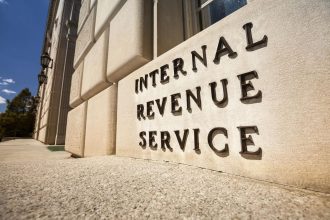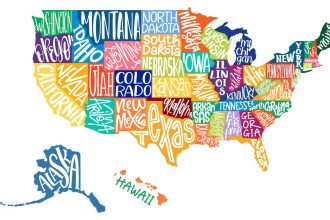Robert Goulder, Steve Rosenthal of the Urban-Brookings Tax Policy Center, and Livia Mucciolo discuss updated data from the policy center that shows a decreasing shareholder tax base, and how that could affect tax policy.
This transcript has been edited for length and clarity.
Robert Goulder: Hello, I’m Bob Goulder, contributing editor with Tax Notes. Welcome to In the Pages, our video series where we profile recent content from our print and online publications.
Now, sometimes you come across a tax article that causes you to second-guess the conventional wisdom — in this case, the double taxation of corporate earnings at both the entity and shareholder level. In recent years, it’s become clear that the taxation of shareholders isn’t what it’s cracked up to be. The percentage of taxable shareholders has dwindled over time, substantially. Now, the implication is that we’re doing a poor job of taxing dividends in particular and capital income generally. The body of research behind that is about a decade old.
So what I want to know is, what have the intervening years taught us? And that is a question that our featured article aims to address. It’s titled “Who’s Left to Tax? Grappling With a Dwindling Shareholder Tax Base.” And we’re very pleased to have both of the authors with us. They are Steven M. Rosenthal and Livia Mucciolo with the Urban-Brookings Tax Policy Center. Steve and Livia, welcome to In the Pages.
Steven Rosenthal: Thank you. Happy to be here.
Livia Mucciolo: Thanks for having us.
Robert Goulder: So let’s get right to it. Steve, who are all these nontaxable shareholders, and when did their nontaxable status become a significant problem for our tax system?
Steven Rosenthal: Well, the largest group of nontaxable shareholders are foreign investors. Their capital gains are sourced abroad and are tax free. Their dividends are taxed lightly and only on publicly traded stock, portfolio stock. The next largest group are retirement accounts. As I’ve written in the past, retirement accounts have exploded in size, a huge tax expenditure. And after that you find some not-for-profit institutions and the like.
But the percent of taxable shareholders has dropped from about 80 percent, 60 years ago, to about 27 percent today. And what’s most important is the rise in foreign ownership. And the reason in my mind that’s most important was if you look to the last time we had a major corporate tax reduction and reform, the [Tax Reform Act of 1986], corporate shareholders were about 16 percent of the shareholder base. And if you go fast-forward to 2017, they become much closer to 40 percent of the base.
And so a lot of the thinking that we had in the tax reform efforts of 1986 and how we can neglect foreign investors, really we could not do in my judgment in 2017, which is what some of what I’ve written about in the past. But nonetheless, I’d say it’s a larger problem when we think about corporate taxes, especially since the last major tax reform effort.
Robert Goulder: OK. And for this new article in Tax Notes, how is it original, and what motivated you to go back and look at the data again?
Livia Mucciolo: So originally I think economists vastly overestimated the taxable share, sometimes over 50 percent. And that’s in part, I think the data — it’s hard to unravel. There’s a lot of data across a lot of years and even just the categories that the [Federal Reserve] puts out can obscure the taxable shares. So we wanted to unravel it and see if we put it into these different categories, how it would come across. And so that was how this work originated. It was before I joined, so Steve can speak more to that, but the idea was we wanted to actually dive deep into the data and see: Is it true? Is it over 50 percent or is it less?
Robert Goulder: Well, Livia, I’m so glad you mentioned that because the percentage of nontaxable shareholders, it’s so high, so shocking, really, that some people are going to say, “Well, wait a second. Let’s double-check the data here.” And conveniently, the last part of your forthcoming Tax Notes article is the appendix, where you go over your methodologies. So tell us about that. What’s in the appendix, and in particular, how do you hope readers will engage with the data?
Livia Mucciolo: For sure. So we really wanted to be transparent with our methodology and our data. I think there’s a rising trend in research to be open source and really just lay out how you worked through a problem. And so that was the main idea, is we wanted people to be able to follow along. And in doing so, we tried to make it as clear as possible. Like I said, the data can come across as really complicated.
So the appendix works through the different steps. And these are these umbrella steps that we thought would be good at showing the progress as we work from the raw data into the tables and the numbers that we get, and the appendix shows these tables. But our goal is to also make the spreadsheet where all of this underlying data that we’ve worked through, we want to make that available as well. We’re just currently working on cleaning that up.
But if people have any questions, we want them to feel comfortable asking them. They can always email us. We want people to be able to really engage with this data and ask questions and even continue it. I think the goal is, in sharing our methodology in the future, if people want to see this continuing trends or see if things have shifted, they can work through this themselves.
Robert Goulder: Well, the data tells a story, and in this case, it’s a very persuasive one. It’s not some fluke of some strange year with economic outcomes that are shaded by COVID or pandemics or disruptions. This is a firm conclusion over a wide range of years, and it has all sorts of implications.
What are the implications for the members of Congress who passed the [Tax Cuts and Jobs Act] a couple of years ago and said, “Hey, these corporate tax cuts, it’s an ‘America First’ fiscal policy.” My question to you guys: How can it be an “America First” policy if so much of the resulting benefit from a corporate tax cut goes to foreign investors, perhaps even foreign governments themselves investing through sovereign wealth funds?
Steven Rosenthal: So Bob, I don’t think the slashing of corporate taxes from 35 to 21 percent in 2017 was “America First.” It resulted in a huge windfall to foreign investors. Paul Krugman labeled the slashing of the tax rates and the revenue loss as a $700 [billion] foreign aid program for foreign investors. And as a consequence, I think that it’s truly an issue in terms of how we look to corporate receipts. As you mentioned before, it’s rather well known that corporations have been paying fewer and fewer taxes. We collect so little from them as a percent of GDP. What has not been documented well — until our work — really is how little taxes are collected at the shareholder level.
Now, the flip side of this, and it’s a fair enough argument, is that well, maybe we need to induce foreign investors to invest their capital in the U.S. And so when we lower our taxes on foreign investors by exempting their capital gains and by reducing their dividend taxes. Then they are more inclined to invest in the U.S.
But frankly, we haven’t had any trouble attracting capital in the U.S. Returns on U.S. equities have been tremendous over the last decade or two. There’s been some recent work that we’ve cited in our new article that suggests that foreigners not just are getting a windfall from corporate tax cuts, but are getting a windfall by virtue of the fact of the monopolistic position of American multinationals and the huge profitability that they’ve enjoyed. And that’s been a welfare loss for U.S. investors who likewise invest abroad, but they have received lower returns than foreign investors that invest here.
And so, in my view, cutting corporate taxes on top of giving foreign investors access to our attractive financial markets, that’s really unnecessary and has not put America first. America’s a distant second with this approach, in my view.
Robert Goulder: And Livia, anything to add?
Livia Mucciolo: Yes. So Steve, in reference to the Paul Krugman article, I think you meant to say $700 billion and not $700 million. Pretty big difference.
Robert Goulder: Speaking of implications, what are the implications for entities that are passthroughs, S corps, partnerships? If we’re not going to tax them at the shareholder level, then we better tax them at the entity level. But, I mean, some of those people, some of those entities, aren’t paying taxes there either. I wanted to ask you about passthroughs and also about stock buybacks. What are the implications?
Steven Rosenthal: Well passthroughs actually, as a structural matter, are taxed much better from a policy perspective than corporates, at least publicly traded corporates. Not the C corps. Not the S corps, and the closely held C corps that merely pay wages to their owners. And the reason for that is with passthroughs we almost always collect one level of tax. That is, foreign investors who invest in a partnership or even a branch operation in the U.S. — there’s one level of tax, an effectively connected income tax. For partnerships, foreign businesses, foreign investors investing in U.S. partnerships or corporate-level tax for a branch operation. And S corps also; we almost always collect one level of tax because foreign investors and not-for-profits, tax exempts, cannot be shareholders of S corporations. There’s a small minor digression with respect to ESOP [employee stock ownership] ownership of S corps.
However, as a general proposition, if there’s a business in the U.S., we collect one level of tax. And that level might be small given the passthrough deduction and all these other rate reductions, but at least the base is working well. We’re collecting one level of tax.
What’s so striking about corporations is we’re doing badly at both levels. That is, we’re not collecting much in corporate taxes or on corporate profits or capital invested in corporations, and we’re not collecting much at the shareholder level. And in my view that is a discontinuity and has fueled the growth of foreign investors and other tax exempts in U.S. corporations because we’re simply not collecting our toll charge from businesses that operate in the U.S.
Shifting to your buyback excise tax question, one of the topics that we grappled with — actually we posted a brief yesterday on the buyback excise tax, the tax advantages, which we linked to in our Tax Notes article. And what we found on careful looking at the buyback excise tax is that buybacks are really favored in the U.S. from a tax standpoint over dividend distributions. And that’s because buybacks are tax free to foreigners, at least to capital gains when a foreigner sells in a buyback, and also to domestic taxable investors who often are taxed at a very low rate.
And so with buybacks — especially because the growth of foreign investors, and to a lesser extent, the tax advantages to domestic investors — buybacks are favored over dividends, and the tax advantage is pretty healthy, like over 7 percent, we’ve estimated in our work that was published yesterday that we linked to in our new article to be published on April 1 in Tax Notes.
And on account of that, we now have a 1 percent buyback excise tax and President Biden, in his latest budget, and [Senate Finance Committee] Chairman Ron Wyden [D-Ore.] who first introduced the buyback excise tax, both have suggested moving the buyback excise tax from 1 to 4 percent. And we think there’s plenty of room to increase it from 1 to 4 percent, even a little larger, to remove some of the tax advantages of buybacks over dividends. And so, in short, the foreign advantage in my view, is fueling the buyback growth in recent years.
Robert Goulder: In terms of thinking about ways that Congress could fix it, does it always come down to withholding? Do we need something like we have in the real estate sector? We have FIRPTA [Foreign Investment in Real Property Tax Act]. Do we need something that’s the counterpart to that for financial investments?
Steven Rosenthal: Well, Bob, I think you’re putting your finger on the solution, and it’s reflected in part from my testimony to the Senate Finance Committee. At the time the Senate Finance Committee was thinking of what was known as a dividends pay deduction, reducing income at the corporate level and shifting income to the shareholder level, without a withholding tax. And I pointed out that “that would just lose revenue. There’d be nobody to pay any taxes.”
But one of the things we explored at the hearing, and I had explored a little in my prior Tax Notes article, was what if we had a withholding tax on corporate distributions to foreign investors? Now mind you, it gets a little tricky because capital gains are sourced abroad and it’s hard to collect on those taxes. Dividends by treaty are often subject to reduced rate, and it’s hard for us to overturn our treaties.
However, I think what we could do is collect taxes at the corporate level, a healthy tax, not a 21 percent tax, but more towards where we were, 28 percent, say, as the Biden administration has proposed. And then allow shareholders a credit for taxes paid at the corporate level. And that effectively will tax the large group of tax-exempt investors more heavily because corporate taxes will be collected at only taxable shareholders. Those traditional brokerage accounts, taxable brokerage accounts, will get a credit for those taxes. That would result in the right answer. And that’s the approach that I favor.
And there’s a couple of problems about that, which is, “Hey, if we’re going to have a robust corporate tax, won’t our corporations just migrate abroad?” That was a larger concern in 2016 when the Senate Finance Committee was looking at integration before a lot of our anti-inversion and other anti-profit-shifting approaches have been adopted, base erosion has been adopted.
So I think today I’m less concerned about U.S. corporations migrating. But the answer again is, to that a Biden proposal, to have the U.S. embrace the pillar 2 minimum tax globally. And so I think with a more robust U.S. corporate tax, coupled with nonrefundable credit to taxable shareholders, and a healthy corporate minimum tax aligned with foreign countries in our competitors, that’s the path forward.
Robert Goulder: There you have it. The name of the article is “Who’s Left to Tax? Grappling With a Dwindling Shareholder Tax Base,” and the authors are Steven M. Rosenthal and Livia Mucciolo with the Urban-Brookings Tax Policy Center. Thank you so much for joining us.
Livia Mucciolo: Thank you.
Steven Rosenthal: Thank you.
Read the full article here














